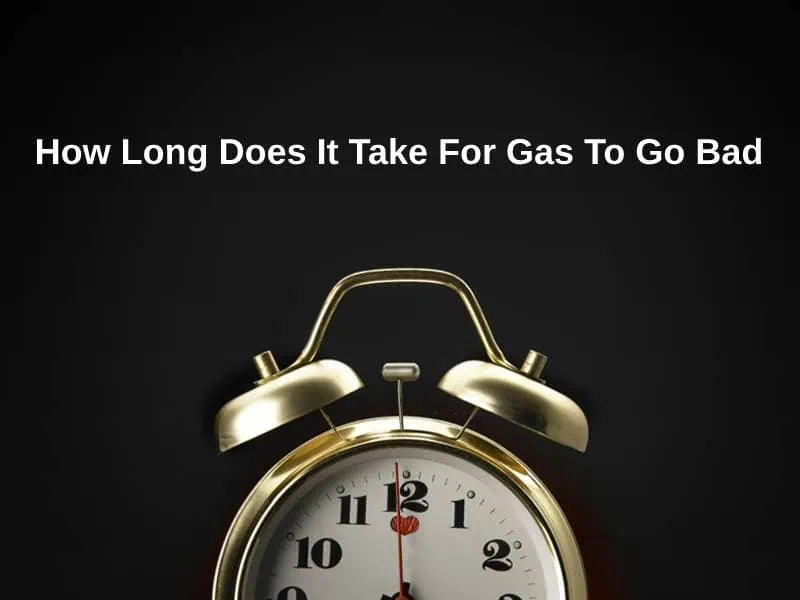Exact Answer: 2 Months to 3 Months
Gasoline can actually last for a significantly longer time than usual if it is stored properly, after all, storage conditions are one of the major factors which play a vital role in determining the life expectancy of gasoline. However, apart from the storage conditions, another important factor that can either increase or decrease the life expectancy of gasoline is the type of gas.

How Long Does It Take For Gas To Go Bad?
| Type Of Gasoline | Time |
| Pure gasoline | 4 months to 6 months |
| Ethanol-blended gasoline | 2 months to 3 months |
| Fuel-stabilized gasoline | 1 year to 3 years |
There are majorly three types of gasoline, that are, pure gasoline, ethanol-blended gasoline, and fuel-stabilized gasoline. Depending upon the stability quotient of these three types of gasoline, the life expectancy of the gas depends.
Pure gasoline, as the name suggests is the pure form of gasoline among all three types of gasoline. It does not have any artificially added stabilizers or any other chemical compound. The best part about pure gasoline is that it is completely hydrophobic, which means it does not absorb any water or moisture. As a result, pure gasoline does not react with water or moisture resulting in its spoilage. However, pure gasoline is extremely reactive to oxygen which can make the gas oxidized and contaminate it. When stored in proper conditions, pure gasoline can last for about a minimum of 4 months to a maximum of 6 months.
Secondly, ethanol-blended gas is hydrophilic in nature which means it reacts with water or moisture resulting in its contamination. Apart from being contaminated with water, ethanol-blended gas can also get oxidized if not stored properly and gets exposed to air. When stored in proper conditions, ethanol-blended gas can last for about 2 to 3 months.
Lastly, fuel-stabilized gas is the most stable type of gasoline among all three. The gas is artificially synthesized to become stable when used as a fuel. The additionally added stabilizers in the gas not just stabilize the gas to be used as a fuel but also slow down the process of the oxidation and evaporation of the gas. The life expectancy of fuel-stabilized gasoline is about a minimum of one year to a maximum of three years.
Why Does It Take That Long For Gas To Go Bad?
To be more specific behind why the type of gas can play a major role in determining the life expectancy is because each and every gas has a different level of stability. The stability of gas is majorly dependent on the kinetic energy of the gas. If gas has higher kinetic energy, then the free atoms of the gas will move at a higher speed. As a result, since the atoms are moving at a very fast speed, they would collide with each other and thus result in instability of the gas.
While, on the other hand, if gas has lower kinetic energy then the free atoms of the gas would not move at a very high speed as compared to gas having higher kinetic energy. As a result, the atoms of the gas would collide with each other at a lower frequency, therefore, the gas would consequently be less unstable.
Therefore, the stability of a gas majorly depends upon its kinetic energy, however, external factors such as temperature and pressure also play role in determining the stability quotient of the gas.
Conclusion
If you want to increase the life expectancy of the gas, then the best way to do it is to store the gas properly. By storing the gas in a sealed and air-tight container, completely away from exposure to oxygen, moisture, and other atmospheric agents can increase its life expectancy for about 3 months to 4 months.
The major factor which results in contamination is the oxidation of gas or degradation after reacting with water. Thus, if these two processes are avoided for the gas that it can even last for up to years. When the gas goes bad, it does not go well to be used as a fuel and if still used, then most probably the engine of the vehicle would not get started.